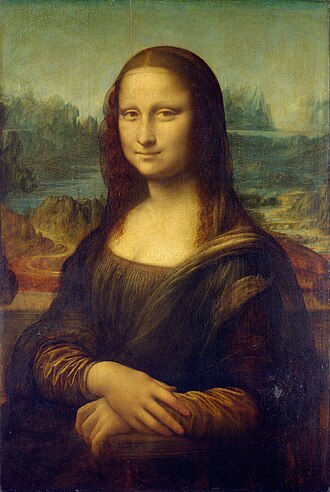Italian art
Italian art refers to the visual arts originating from or associated with the Italian peninsula. It encompasses a wide range of artistic expressions, including painting, sculpture, architecture, and decorative arts, spanning from ancient times to the present day.
Ancient Italian Art
Italian art has its roots in the Etruscan civilization and the Roman Empire. The Etruscans were known for their funerary art, including elaborate tombs and sarcophagi. Roman art, heavily influenced by Greek art, is renowned for its architecture, sculpture, and mosaics.
Medieval Italian Art
During the Middle Ages, Italian art was dominated by Byzantine influences, particularly in the regions of Venice and Ravenna. The period saw the rise of Romanesque architecture and the development of Gothic architecture in Italy.
Renaissance
The Italian Renaissance was a period of great cultural change and achievement from the 14th to the 17th century. It began in Florence and spread throughout Italy and into the rest of Europe. Key figures of this period include Leonardo da Vinci, Michelangelo, Raphael, and Titian. The Renaissance is characterized by a renewed interest in classical antiquity, the development of linear perspective, and a focus on humanism.
Baroque and Rococo
The Baroque period in Italy, spanning the 17th century, is marked by dramatic use of light and shadow, intense emotions, and grandeur. Notable artists include Caravaggio, Gian Lorenzo Bernini, and Artemisia Gentileschi. The Rococo style, which followed in the 18th century, is characterized by ornate decoration and lightness, with artists like Giovanni Battista Tiepolo.
Neoclassicism and Romanticism
In the late 18th and early 19th centuries, Italian art saw the rise of Neoclassicism, inspired by the classical art of ancient Greece and Rome. Prominent artists include Antonio Canova and Vincenzo Camuccini. The Romantic movement, which followed, emphasized emotion and individualism, with artists like Francesco Hayez.
Modern and Contemporary Italian Art
The 20th century brought significant changes to Italian art, with movements such as Futurism, led by Filippo Tommaso Marinetti and Umberto Boccioni. Post-World War II, Italian art saw the emergence of Arte Povera, with artists like Michelangelo Pistoletto and Giuseppe Penone. Contemporary Italian art continues to evolve, with a diverse range of styles and mediums.
Related Pages
- Etruscan civilization
- Roman Empire
- Byzantine art
- Renaissance
- Baroque
- Neoclassicism
- Futurism
- Arte Povera
Categories
Transform your life with W8MD's budget GLP-1 injections from $125.
W8MD offers a medical weight loss program to lose weight in Philadelphia. Our physician-supervised medical weight loss provides:
- Most insurances accepted or discounted self-pay rates. We will obtain insurance prior authorizations if needed.
- Generic GLP1 weight loss injections from $125 for the starting dose.
- Also offer prescription weight loss medications including Phentermine, Qsymia, Diethylpropion, Contrave etc.
NYC weight loss doctor appointments
Start your NYC weight loss journey today at our NYC medical weight loss and Philadelphia medical weight loss clinics.
- Call 718-946-5500 to lose weight in NYC or for medical weight loss in Philadelphia 215-676-2334.
- Tags:NYC medical weight loss, Philadelphia lose weight Zepbound NYC, Budget GLP1 weight loss injections, Wegovy Philadelphia, Wegovy NYC, Philadelphia medical weight loss, Brookly weight loss and Wegovy NYC
|
WikiMD's Wellness Encyclopedia |
| Let Food Be Thy Medicine Medicine Thy Food - Hippocrates |
Medical Disclaimer: WikiMD is not a substitute for professional medical advice. The information on WikiMD is provided as an information resource only, may be incorrect, outdated or misleading, and is not to be used or relied on for any diagnostic or treatment purposes. Please consult your health care provider before making any healthcare decisions or for guidance about a specific medical condition. WikiMD expressly disclaims responsibility, and shall have no liability, for any damages, loss, injury, or liability whatsoever suffered as a result of your reliance on the information contained in this site. By visiting this site you agree to the foregoing terms and conditions, which may from time to time be changed or supplemented by WikiMD. If you do not agree to the foregoing terms and conditions, you should not enter or use this site. See full disclaimer.
Credits:Most images are courtesy of Wikimedia commons, and templates, categories Wikipedia, licensed under CC BY SA or similar.
Contributors: Prab R. Tumpati, MD







